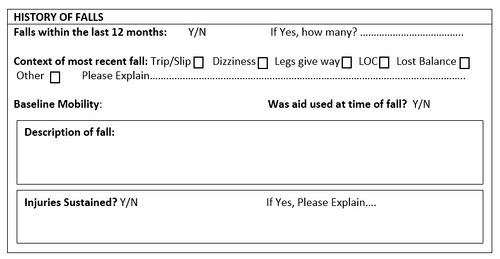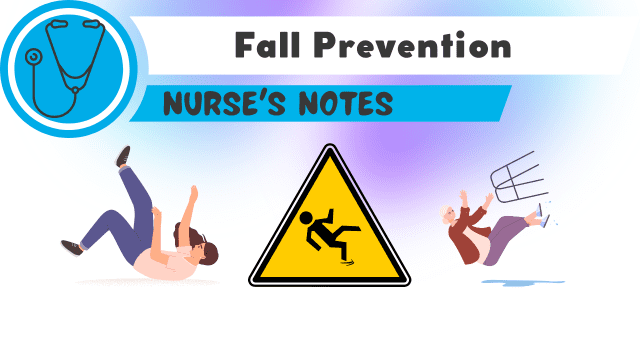About Dementia Fall Risk
Table of ContentsDementia Fall Risk Can Be Fun For AnyoneIndicators on Dementia Fall Risk You Need To KnowFascination About Dementia Fall RiskThe 6-Minute Rule for Dementia Fall Risk
An autumn danger evaluation checks to see just how most likely it is that you will certainly fall. It is primarily done for older adults. The assessment usually includes: This consists of a collection of inquiries regarding your overall health and wellness and if you have actually had previous drops or troubles with balance, standing, and/or strolling. These devices evaluate your toughness, equilibrium, and stride (the way you walk).STEADI includes testing, examining, and intervention. Treatments are suggestions that may decrease your risk of dropping. STEADI consists of 3 steps: you for your danger of succumbing to your threat variables that can be boosted to attempt to avoid drops (for example, equilibrium troubles, impaired vision) to decrease your danger of dropping by utilizing effective strategies (for example, offering education and resources), you may be asked numerous concerns including: Have you dropped in the past year? Do you really feel unstable when standing or strolling? Are you fretted about falling?, your service provider will certainly evaluate your strength, equilibrium, and stride, making use of the complying with fall evaluation tools: This test checks your stride.
If it takes you 12 seconds or more, it may mean you are at greater threat for a fall. This examination checks toughness and balance.
The settings will certainly get more difficult as you go. Stand with your feet side-by-side. Relocate one foot midway onward, so the instep is touching the large toe of your other foot. Relocate one foot fully in front of the various other, so the toes are touching the heel of your various other foot.
The Ultimate Guide To Dementia Fall Risk
The majority of falls take place as an outcome of numerous contributing elements; for that reason, managing the danger of dropping starts with determining the elements that add to drop risk - Dementia Fall Risk. A few of one of the most relevant threat factors consist of: Background of previous fallsChronic clinical conditionsAcute illnessImpaired gait and equilibrium, lower extremity weaknessCognitive impairmentChanges in visionCertain risky medicines and polypharmacyEnvironmental aspects can additionally enhance the threat for falls, consisting of: Insufficient lightingUneven or harmed flooringWet or unsafe floorsMissing or damaged handrails and grab barsDamaged or poorly equipped tools, such as beds, mobility devices, or walkersImproper use assistive devicesInadequate supervision of the individuals staying in the NF, including those that exhibit aggressive behaviorsA successful loss threat management program calls for a complete clinical evaluation, with input from all participants of the interdisciplinary team

The treatment strategy should likewise consist of treatments that are system-based, such as those that promote a risk-free setting (suitable lights, handrails, order bars, etc). The efficiency of the interventions need to be evaluated periodically, and the care plan revised as necessary to show adjustments in the fall danger assessment. Carrying out a fall danger monitoring system making use of evidence-based best method can reduce the frequency of falls in the NF, while restricting the possibility for fall-related injuries.
8 Simple Techniques For Dementia Fall Risk
The AGS/BGS guideline suggests screening all grownups matured 65 years and older for fall threat every year. This screening includes asking patients whether they have fallen 2 or even more times in the previous year or sought clinical interest for a loss, or, if they have actually not dropped, whether they feel unstable when strolling.
Individuals who have fallen once without injury must have their equilibrium and stride examined; those with stride or balance abnormalities ought to obtain extra analysis. check this site out A history of 1 loss without injury and without stride or equilibrium problems does not warrant more analysis past ongoing annual autumn threat testing. Dementia Fall Risk. A loss threat analysis is called for as part of the Welcome to Medicare assessment

What Does Dementia Fall Risk Mean?
Documenting a falls history is one of the top quality signs for autumn prevention and management. Psychoactive medications in particular are independent predictors of drops.
Postural hypotension can usually be minimized by minimizing the dosage of blood pressurelowering drugs and/or stopping medicines that have orthostatic hypotension as a side result. Usage of above-the-knee assistance pipe and copulating the head of the bed raised may also decrease postural reductions in click to investigate high blood pressure. The recommended aspects of a fall-focused checkup are revealed in Box 1.

A TUG time higher than or equivalent to 12 seconds suggests high fall danger. Being incapable to stand up from a chair of knee elevation without making use of one's arms shows boosted loss risk.